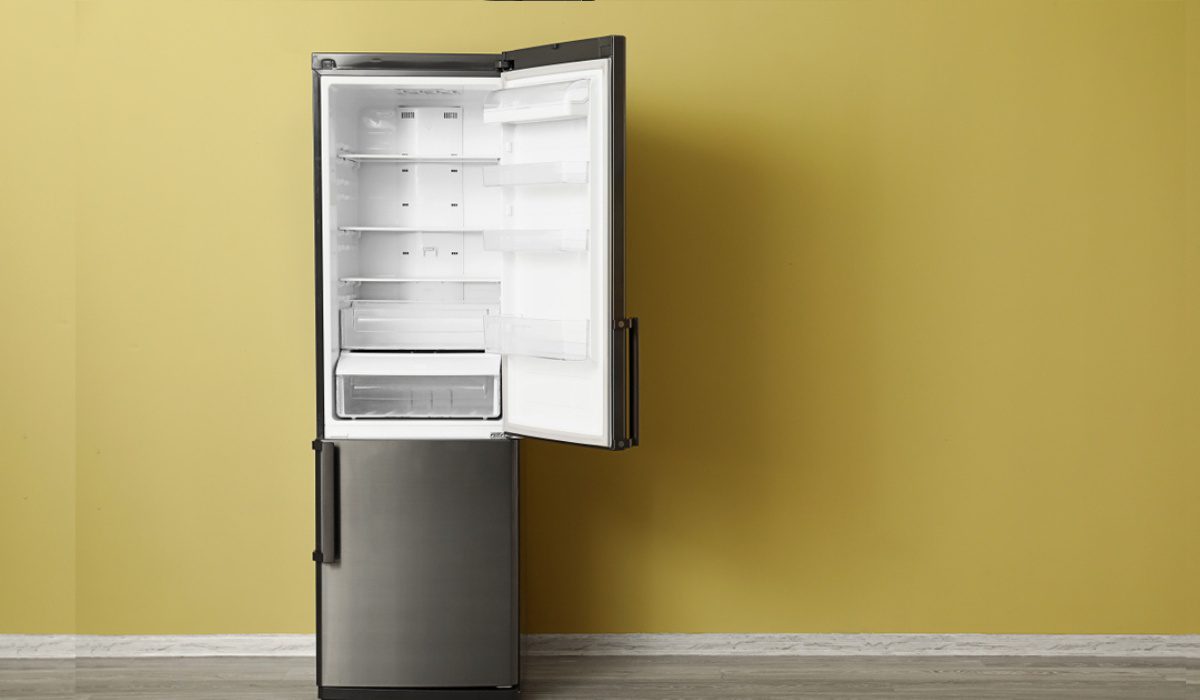The refrigerator is a crucial appliance in any kitchen, ensuring the longevity of food and beverages. If you open your fridge and find items not as cold as they should be, it’s a sign that your refrigerator is not operating at its optimal temperature. However, when a fridge fails to cool properly, it poses an inconvenience and a potential health hazard due to the risk of bacterial growth. To ensure food safety, the FDA recommends a fridge temperature of 40 degrees Fahrenheit or lower, and any deviation requires prompt attention. In this guide, we’ll delve into the common causes of a fridge not cooling, simple fixes you can try, and when it’s time to call in a professional.
See also: How to clean vacuum cleaner?
10 possible reasons behind fridge not cooling properly
A refrigerator is a household essential, and maintaining its cooling efficiency is crucial. Here are simple fixes to try before seeking professional help:
Temperature control is improperly set
Check and adjust the temperature control if your fridge is running but not adequately. Make sure the thermostat is set to the proper setting. Do it for the refrigerator and freezer, reset them as needed, and allow 24 hours for stabilisation.
Overstuffing
An overstuffed fridge or clustered contents can hinder proper air circulation, affecting the cooling efficiency. Organise and reduce contents to optimise cooling. Maintaining the fridge at half to three-quarters full is ideal for efficient cooling.
Blocked air vents
Ensure that air vents are free from obstructions. Blocked vents can impede the flow of cold air into the fridge and freezer compartments. Clean vents and rearrange items to ensure unobstructed airflow, restoring optimal cooling efficiency.
Faulty door gaskets
Dirty gasket seals can compromise the fridge’s cooling efficiency. Clean them with a damp cloth, but if they are worn or damaged, professional replacement may be necessary. Ensure door gaskets are sealing correctly by performing a simple paper bil test. Replace gaskets if they are brittle or not forming a tight seal. For effective sealing and cooling cool air leaks, intact seals are essential.
Frost buildup
Defrost the freezer if the frost buildup is obstructing vents. Plan accordingly to store perishable items during the defrosting process.
Location is affecting the cooling capacity
The fridge’s location matters. Ensure the refrigerator is indoors, avoiding garages or areas with extreme temperatures or near doors and windows. Allow sufficient space around the fridge for proper air circulation.
Condenser coils are dirty
The condenser coils at the back of the refrigerator should be cleaned regularly. It helps to remove dust and debris, ensuring they can efficiently release heat and maintain proper cooling. Follow manufacturer instructions for cleaning to keep optimal performance.
Electric supply is faulty
Check for power supply issues. Ensure the fridge is plugged in, and if it is not receiving power, inspect the circuit breaker and GFCI outlet. Seek expert advice to resolve potential power supply issues if the problem persists.
Uneven surface
An even surface is crucial for the fridge’s proper functioning. Use a bubble level to check and adjust the fridge’s alignment to ensure doors close correctly and maintain the desired temperature.
Improper evaporator fan
The blower circulates cool air from the freezer throughout the refrigerator to other areas. The ability to circulate cool air within the food compartment is compromised when the evaporator fan stops operating. The food compartment does not cool, but the freezer stays cold.
When to call a professional?
If the simple fixes prove ineffective and your refrigerator still fails to cool adequately, it’s time to consult a professional. Complex issues like a frosted evaporator coil, malfunctioning compressor, broken evaporator fan, defective temperature control board, or internal thermostat problems require expert diagnosis and repair. Check your warranty for potential coverage.
FAQs
Why won't my refrigerator freeze, but the freezer does?
Most likely, one of the evaporator fans or coils isn't working properly. One more issue might be a broken defrost timer.
Can I disconnect my refrigerator because it doesn't seem to be cooling?
Unplugging may help if the freezer has an icy buildup blocking vents. Test the power outlet before considering a professional.
When should I turn down the temperature in my refrigerator?
Consider lowering the temperature slightly in hot summer to help the fridge cope with increased ambient temperatures.
How often should I clean the condenser coils?
Cleaning the coils every six months is recommended, or more frequently if you have pets.
Can I replace the door gaskets myself?
Yes, replacing door gaskets is a DIY-friendly task. Soak new gaskets in hot water for easier installation.
Why is location crucial for a fridge's cooling capacity?
Placing the fridge in extreme temperatures or near heat-producing appliances can affect its ability to maintain the set temperature.
What could be the issue if the fridge light is off despite being plugged in?
It might be a faulty electric supply. Check the circuit breaker GFCI outlet and ensure the plug is securely connected.
What if my refrigerator is understocked?
Keep your fridge three-quarters full for proper air circulation; in a pinch, add water pitchers to maintain mass and aid cooling.
What if my fridge is not receiving power?
Check the plug, outlet, and circuit breaker; consult a professional to address potential electrical problems if the issue persists.
| Got any questions or point of view on our article? We would love to hear from you. Write to our Editor-in-Chief Jhumur Ghosh at jhumur.ghosh1@housing.com |






